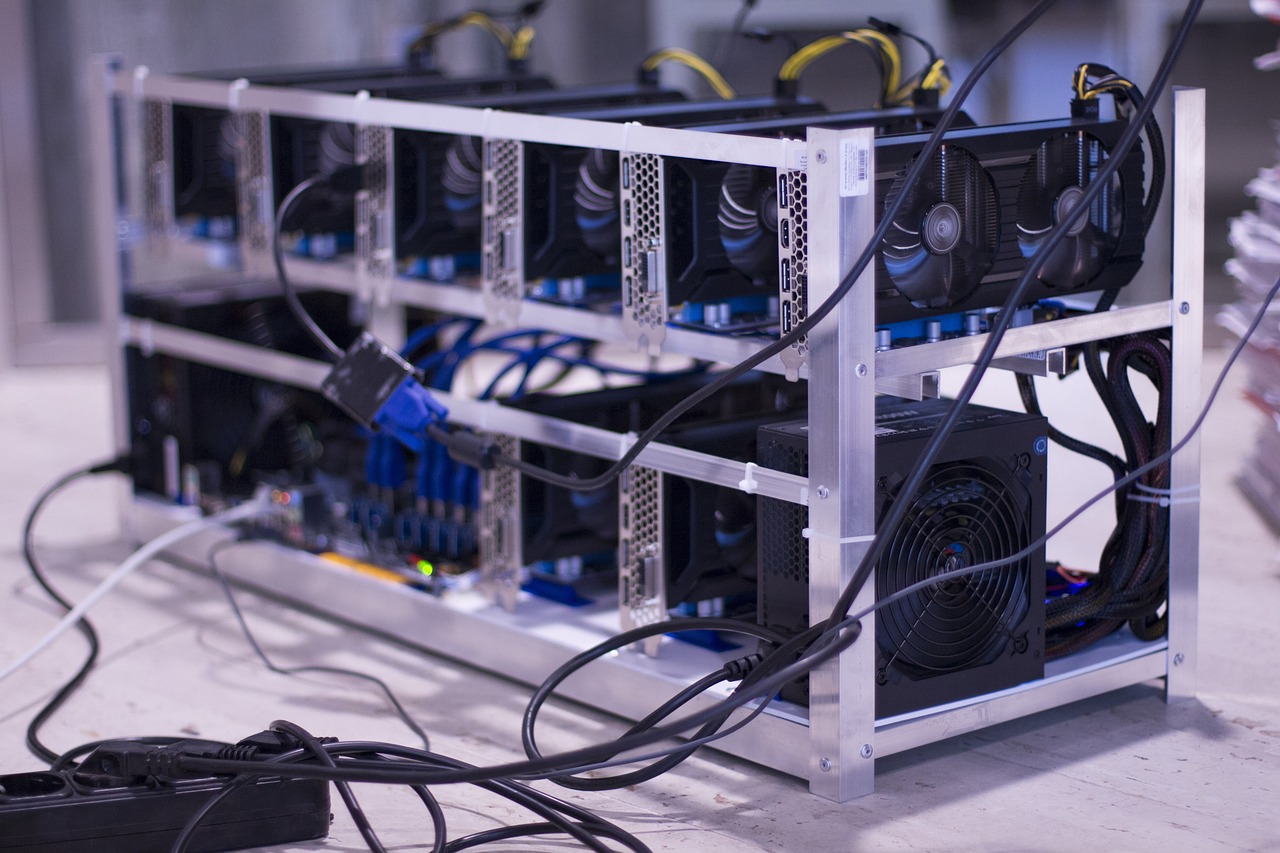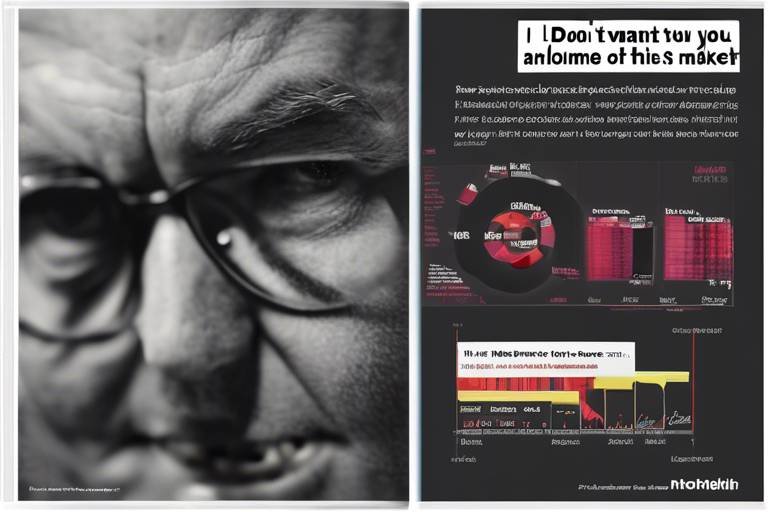How to Analyze the Supply and Demand of Cryptocurrencies
In the ever-evolving world of cryptocurrencies, understanding the intricate balance of supply and demand is crucial for anyone looking to invest or trade effectively. Just as in traditional markets, the forces of supply and demand dictate the value and availability of digital currencies. So, what exactly drives these forces in the crypto realm? In this article, we will explore the fundamental concepts of supply and demand, delve into the factors that influence them, and provide insights into how you can leverage this knowledge for better investment decisions.
At its core, the principles of supply and demand are simple yet powerful. Supply refers to how much of a cryptocurrency is available for purchase at any given time, while demand represents how much of that cryptocurrency people are willing to buy. The interaction between these two elements creates the market price. If demand exceeds supply, prices typically rise; conversely, if supply outstrips demand, prices tend to fall. This fundamental economic principle is not just an academic concept; it plays out daily in the volatile world of cryptocurrencies, where prices can swing wildly based on market sentiment, news, and investor behavior.
Several key factors influence the supply of cryptocurrencies, each playing a significant role in shaping market availability. Understanding these elements is essential for anyone looking to navigate the crypto landscape effectively. Some of the most notable factors include:
- Mining Rates: The rate at which new coins are mined can directly affect the overall supply in circulation.
- Issuance Schedules: Many cryptocurrencies have predetermined issuance schedules that dictate how and when new coins are released.
- Technological Changes: Innovations and upgrades in blockchain technology can alter the supply dynamics significantly.
Mining is a fundamental process that creates new coins and validates transactions on the blockchain. For cryptocurrencies like Bitcoin, mining involves solving complex mathematical problems, which in turn rewards miners with newly minted coins. This process not only increases the total supply but also influences the circulation of existing coins. As mining becomes more challenging over time—due to factors like halving events—the rate of new supply slows down, which can lead to increased scarcity and potentially higher prices.
When discussing mining, it's essential to differentiate between the two primary consensus mechanisms: Proof of Work (PoW) and Proof of Stake (PoS). PoW relies on computational power to validate transactions and mine new coins, while PoS allows holders to validate transactions based on the number of coins they own. This difference significantly impacts supply dynamics:
| Consensus Mechanism | Impact on Supply |
|---|---|
| Proof of Work | New coins are created through mining; supply can fluctuate based on mining difficulty. |
| Proof of Stake | New coins are generated based on existing holdings; supply is often more predictable. |
Another intriguing aspect of cryptocurrency supply is the concept of token burn. This mechanism involves permanently removing a portion of the total supply from circulation, which can enhance scarcity. By reducing the total number of coins available, token burns can create a sense of urgency among investors, potentially driving up demand and prices. For instance, if a project announces a token burn, it can lead to a surge in investor interest, as people rush to acquire coins before they become even rarer.
While supply is critical, understanding the factors that drive demand for cryptocurrencies is equally important. Demand can be influenced by a variety of elements, including investor sentiment, market trends, and external events. Recognizing these demand influencers can provide valuable insights for making informed investment decisions.
Market sentiment is a powerful force in the cryptocurrency world. It encompasses the emotions and attitudes of investors towards a particular cryptocurrency or the market as a whole. Positive news, such as regulatory approvals or technological advancements, can lead to a surge in demand, while negative news can have the opposite effect. Social media platforms and online communities also play a significant role in shaping market sentiment, as rumors and discussions can quickly spread, influencing investor decisions.
Media coverage can dramatically sway public perception and, consequently, demand for specific cryptocurrencies. A glowing article about a new project can spark interest and lead to increased buying activity, while negative press can deter potential investors. It's essential to stay informed and critically evaluate media narratives, as they can often exaggerate trends or create unwarranted fear.
Finally, regulatory changes can have profound effects on cryptocurrency markets. New laws and regulations can either bolster demand by legitimizing the market or stifle it by creating barriers to entry. Investors must stay abreast of regulatory developments, as they can significantly influence both supply and demand dynamics in the crypto space.
Q: How does supply and demand affect cryptocurrency prices?
A: When demand exceeds supply, prices tend to rise. Conversely, when supply outstrips demand, prices usually fall.
Q: What is token burn, and how does it work?
A: Token burn is a mechanism that permanently removes coins from circulation, which can increase scarcity and potentially drive up demand.
Q: How do media narratives influence cryptocurrency markets?
A: Media coverage can shape public perception and investor sentiment, leading to fluctuations in demand based on positive or negative news.

Understanding Supply and Demand Basics
To grasp the intricacies of the cryptocurrency market, it's essential to understand the fundamental principles of supply and demand. These economic concepts are the backbone of any market, including digital currencies. Simply put, supply refers to how much of a particular cryptocurrency is available for trading, while demand indicates how much of that cryptocurrency people want to buy. When demand exceeds supply, prices tend to rise, and when supply outstrips demand, prices typically fall. This basic principle can be likened to a seesaw; when one side goes up, the other must come down.
In the world of cryptocurrencies, the dynamics of supply and demand can be influenced by various factors. For instance, consider the concept of scarcity. Just like a rare collectible, if a cryptocurrency has a limited supply, it can create a sense of urgency among investors, driving demand and consequently increasing its price. On the other hand, if a cryptocurrency has an unlimited supply, it may struggle to attract interest, leading to a decrease in its value. Thus, understanding how these forces interact is crucial for anyone looking to navigate the crypto landscape.
Additionally, the relationship between supply and demand is not static; it fluctuates based on market trends, investor behavior, and external influences such as news and regulations. For example, a positive news story about a cryptocurrency can spark interest and increase demand, while negative news can dampen enthusiasm and decrease demand. This ebb and flow is a key characteristic of the cryptocurrency market, making it both exciting and unpredictable.
To further illustrate these concepts, let's take a look at a simplified table showing how changes in supply and demand can affect cryptocurrency prices:
| Scenario | Supply | Demand | Price Movement |
|---|---|---|---|
| High Demand, Low Supply | Low | High | Increase |
| Low Demand, High Supply | High | Low | Decrease |
| Stable Demand, Increasing Supply | Increasing | Stable | Stable or Decrease |
| High Demand, Constant Supply | Constant | High | Increase |
In summary, understanding the basics of supply and demand is vital for anyone interested in investing in cryptocurrencies. By recognizing how these factors influence market behavior, investors can make more informed decisions, potentially leading to greater success in their trading endeavors. So, the next time you hear about a cryptocurrency's price movement, remember to consider the underlying supply and demand dynamics at play.

Factors Affecting Cryptocurrency Supply
The supply of cryptocurrencies is not a static concept; it's influenced by a myriad of factors that can shift the landscape dramatically. Understanding these elements is crucial for anyone looking to navigate the often turbulent waters of digital currencies. From mining rates to technological advancements, each factor plays a pivotal role in determining how many coins are available in the market. Let's dive deeper into these influences and see how they shape the availability of cryptocurrencies.
One of the most significant drivers of cryptocurrency supply is the mining process. In many cryptocurrencies, such as Bitcoin, mining is the method through which new coins are created and transactions are verified. Miners use computational power to solve complex mathematical problems, and in return, they are rewarded with new coins. However, the rate at which these coins are mined can vary greatly depending on the network's difficulty level and the total amount of mining power being applied. As more miners join the network, the difficulty increases, which can slow down the rate of new coin issuance. This dynamic creates a fascinating interplay between supply and demand that can lead to price fluctuations.
Mining doesn't just influence how many coins are created; it also impacts the overall market availability. For instance, if mining becomes less profitable due to rising electricity costs or decreasing rewards, some miners may exit the market. This reduction in mining activity can lead to a decreased supply of new coins, which, combined with steady or increasing demand, can drive prices up. Conversely, if mining becomes more efficient or profitable, an influx of new coins can saturate the market, potentially leading to price drops.
Another critical aspect affecting supply is the type of consensus mechanism a cryptocurrency employs. The two most common systems are Proof of Work (PoW) and Proof of Stake (PoS). PoW relies on miners to validate transactions and secure the network, while PoS allows validators to create new blocks based on the number of coins they hold and are willing to 'stake' as collateral. This fundamental difference leads to varying supply dynamics. For example, PoW systems often have a predictable issuance schedule, while PoS can lead to more fluid supply changes based on how many tokens are staked. Understanding these mechanisms is vital for investors looking to gauge the long-term supply potential of a cryptocurrency.
Another intriguing mechanism that can affect supply is token burning. This process involves permanently removing a certain number of tokens from circulation, effectively reducing the total supply. Many projects implement token burns as a way to increase scarcity and, consequently, value. For instance, if a project commits to burning a percentage of its tokens every quarter, this can lead to a perception of increased value among investors. It's a bit like a company buying back its shares; the fewer tokens there are, the more valuable each remaining token can become. However, the impact of token burns on actual market prices can vary widely based on investor sentiment and market conditions.
In summary, the supply of cryptocurrencies is influenced by a complex interplay of factors, including mining dynamics, consensus mechanisms, and innovative practices like token burning. Each of these elements contributes to the overall supply landscape, shaping how cryptocurrencies are valued and traded in the market. As an investor or trader, understanding these dynamics is essential for making informed decisions in the ever-evolving world of digital currencies.
- What is the main factor affecting cryptocurrency supply?
The main factors include mining processes, consensus mechanisms, and token burn practices. - How does mining affect cryptocurrency supply?
Mining determines how new coins enter circulation, influencing overall market availability. - What is the difference between Proof of Work and Proof of Stake?
Proof of Work relies on mining, while Proof of Stake requires holding and staking coins to validate transactions. - What is token burning?
Token burning is the process of permanently removing tokens from circulation to reduce total supply and increase scarcity.

Mining and Its Impact on Supply
When we talk about cryptocurrencies, one of the first things that come to mind is mining. But what exactly does mining mean in the context of digital currencies? Essentially, mining is the process through which transactions are verified and added to the public ledger, known as the blockchain. This process is crucial because it not only ensures the integrity of the cryptocurrency network but also plays a significant role in determining the total supply of coins available in the market. Think of mining as the digital equivalent of a gold rush—miners are like prospectors digging for gold, but instead of shovels and pickaxes, they use powerful computers to solve complex mathematical problems.
The rate at which new coins are mined can greatly influence their overall supply. For instance, Bitcoin, the first and most well-known cryptocurrency, has a capped supply of 21 million coins. This means that as more bitcoins are mined, the rate of new bitcoins entering circulation decreases over time, a phenomenon known as halving. Halving events occur approximately every four years, and they cut the reward that miners receive for validating transactions in half. This not only impacts the availability of new bitcoins but also has a psychological effect on investors, often leading to increased demand as scarcity increases.
In contrast, other cryptocurrencies may not have such strict supply limits. For example, Ethereum has a different issuance model that allows for a more flexible supply. This flexibility can lead to different market dynamics, where the supply can be adjusted based on network demand and other factors. Understanding these differences is crucial for investors looking to navigate the complex landscape of cryptocurrency investments.
Moreover, the technological advancements in mining can also affect supply. As mining technology evolves, it becomes more efficient, allowing miners to produce more coins in less time. However, this can lead to a situation where an oversupply occurs, causing prices to drop. Thus, the balance between mining efficiency and supply is delicate and can significantly impact market prices.
In summary, mining plays a pivotal role in the cryptocurrency ecosystem. It not only affects the supply of coins but also shapes the market dynamics that investors must consider. As the landscape of cryptocurrency continues to evolve, staying informed about the mining processes and their implications will be key to making sound investment decisions.
Frequently Asked Questions
- What is cryptocurrency mining? Cryptocurrency mining is the process of verifying transactions and adding them to the blockchain, which also involves creating new coins.
- How does mining affect supply? Mining directly influences the total supply of a cryptocurrency by determining how many new coins are generated over time.
- What is halving? Halving is an event that reduces the reward for mining new blocks by half, affecting the rate at which new coins are created and ultimately the supply.
- Does all cryptocurrency use mining? No, not all cryptocurrencies use mining; some use alternative consensus mechanisms like Proof of Stake.

Proof of Work vs. Proof of Stake
The debate between Proof of Work (PoW) and Proof of Stake (PoS) is a hot topic in the cryptocurrency world, and for a good reason. These two consensus mechanisms serve as the backbone of how transactions are verified and added to the blockchain, and they each have their own unique implications for the supply of cryptocurrencies. Understanding the differences between them can give you deeper insights into how various cryptocurrencies operate and how their supply dynamics are influenced.
At its core, Proof of Work requires miners to solve complex mathematical problems to validate transactions and create new blocks. This process demands significant computational power and energy, which can lead to a high level of resource consumption. For instance, Bitcoin, the most well-known cryptocurrency using PoW, has faced criticism for its environmental impact due to the energy-intensive nature of mining. As more miners join the network, the difficulty of these problems increases, which can impact the rate at which new coins are generated, effectively controlling the supply.
On the other hand, Proof of Stake operates on a different principle. Instead of relying on computational power, PoS allows validators to create new blocks based on the number of coins they hold and are willing to "stake" as collateral. This method is generally seen as more energy-efficient and environmentally friendly because it does not require massive amounts of electricity to solve mathematical puzzles. As a result, PoS can lead to a more stable supply of coins since the generation of new blocks is less variable and more predictable compared to PoW systems.
| Feature | Proof of Work (PoW) | Proof of Stake (PoS) |
|---|---|---|
| Energy Consumption | High | Low |
| Security | Decentralized, but vulnerable to 51% attacks | More secure against such attacks, but requires a significant stake |
| Transaction Speed | Slower due to mining time | Faster, as validation is quicker |
| Accessibility | Requires expensive hardware | More accessible, as anyone can stake coins |
Both mechanisms have their pros and cons, and the choice between PoW and PoS can significantly affect a cryptocurrency's supply dynamics. For instance, with PoW, the supply of coins is directly tied to the mining process, making it susceptible to fluctuations based on miner participation and energy costs. In contrast, PoS provides a more stable and predictable supply since it is based on the amount staked rather than the computational power available.
As the cryptocurrency landscape continues to evolve, many new projects are exploring hybrid models that incorporate elements of both PoW and PoS. This approach seeks to balance the strengths and weaknesses of each mechanism, potentially leading to a more sustainable and scalable future for digital currencies.
- What is the main difference between Proof of Work and Proof of Stake?
Proof of Work relies on computational power to validate transactions, while Proof of Stake uses the amount of cryptocurrency held to determine who validates transactions. - Which is more energy-efficient?
Proof of Stake is generally considered more energy-efficient compared to Proof of Work. - Can you mine cryptocurrencies that use Proof of Stake?
No, in Proof of Stake systems, you validate transactions based on the coins you hold and stake, rather than mining. - Are there cryptocurrencies that use both Proof of Work and Proof of Stake?
Yes, some projects have adopted hybrid models that utilize both mechanisms.

Token Burn and Supply Reduction
The concept of token burn is gaining traction in the cryptocurrency world as a method to manage supply and enhance scarcity. Essentially, token burning involves the intentional destruction of a certain number of tokens, which effectively reduces the total supply available in circulation. This process can create a sense of scarcity, much like how a limited-edition product can drive up demand due to its perceived rarity. When investors see that fewer tokens are available, it can lead to increased interest and potential price appreciation.
Token burning can occur in several ways. One common method is through smart contracts that automatically send tokens to an unspendable address, effectively removing them from circulation. This is akin to taking a physical item and locking it away in a vault, where it can never be accessed again. By doing this, the total supply decreases, which can create a psychological effect on investors, making them more likely to buy in anticipation of future price increases.
Many projects implement token burn mechanisms as part of their overall strategy to maintain a healthy economy for their digital assets. For instance, some cryptocurrencies have built-in burn rates, where a percentage of each transaction is burned. This not only decreases the supply over time but also incentivizes holding the tokens rather than selling them, as holders may anticipate future value increases due to the diminishing supply.
To illustrate the impact of token burns on supply reduction, consider the following table:
| Cryptocurrency | Initial Supply | Burned Tokens | Current Supply |
|---|---|---|---|
| Ethereum (ETH) | 120 million | 2 million | 118 million |
| Binance Coin (BNB) | 200 million | 3 million | 197 million |
| Ripple (XRP) | 100 billion | 1 billion | 99 billion |
As shown in the table, the burning of tokens can significantly affect the overall supply of a cryptocurrency. This process not only helps in managing inflation but also serves as a marketing strategy to attract more investors, as the narrative of scarcity often leads to heightened interest. However, it's important to note that while token burn can create short-term buzz and price spikes, long-term value depends on a multitude of factors, including the project's fundamentals and overall market conditions.
In conclusion, token burn mechanisms play a vital role in the supply dynamics of cryptocurrencies. By reducing the total supply, these practices can enhance scarcity, impact market perception, and ultimately influence investor behavior. For those looking to invest in cryptocurrencies, understanding how token burns work and their implications can be crucial in making informed decisions.

Demand Influencers in the Crypto Market
When it comes to cryptocurrencies, understanding the demand influencers is crucial for anyone looking to navigate this volatile market. Just like any other asset class, the demand for digital currencies can fluctuate wildly based on a variety of factors. So, what are these factors that can either propel a cryptocurrency to new heights or send it crashing down? Let's dive in!
One of the most significant drivers of demand in the crypto market is investor sentiment. This is often shaped by a combination of news, social media buzz, and overall market trends. For example, when a well-known figure in the finance world tweets about a particular cryptocurrency, it can lead to a surge in interest and demand. Similarly, negative news can have the opposite effect, causing panic selling. This emotional rollercoaster is something every investor must navigate, and it’s vital to stay informed about the latest happenings in the crypto space.
Another key influencer is the perceived utility of a cryptocurrency. Investors are more likely to buy into a coin that offers real-world applications or solves a specific problem. Take Ethereum, for example. Its smart contract functionality has garnered significant attention and demand, as it enables developers to create decentralized applications (dApps). In contrast, cryptocurrencies that lack clear use cases may struggle to attract interest, regardless of their marketing efforts.
Additionally, market trends play a pivotal role in shaping demand. For instance, during a bull market, more investors are willing to take risks and buy into cryptocurrencies, pushing prices higher. Conversely, in a bear market, fear and uncertainty can lead to reduced demand as investors retreat to safer assets. Keeping an eye on these trends can provide valuable insights into when to enter or exit the market.
Moreover, technological advancements can significantly influence demand. New features, upgrades, or partnerships can make a cryptocurrency more appealing to potential investors. For instance, if a cryptocurrency announces a major upgrade that enhances its scalability or security, it could lead to increased demand as investors anticipate future growth.
To sum it all up, the demand for cryptocurrencies is influenced by a multitude of factors, including:
- Investor sentiment driven by news and social media.
- Perceived utility and real-world applications of the cryptocurrency.
- Market trends that dictate investor behavior.
- Technological advancements that enhance the attractiveness of a cryptocurrency.
Understanding these demand influencers is essential for anyone looking to make informed decisions in the crypto market. As the landscape continues to evolve, staying updated on these factors can provide a competitive edge. Remember, the crypto market is as much about psychology as it is about technology and economics!
Q: What is the most significant factor influencing cryptocurrency demand?
A: Investor sentiment is often considered the most significant factor, as emotions can drive market movements significantly.
Q: How do technological advancements affect cryptocurrency demand?
A: Technological advancements can enhance the utility and appeal of a cryptocurrency, leading to increased demand among investors.
Q: Can media coverage impact cryptocurrency demand?
A: Absolutely! Media narratives can shape public perception and influence investment decisions, either positively or negatively.
Q: What role does market trend play in cryptocurrency investments?
A: Market trends dictate the overall sentiment and behavior of investors, affecting demand significantly during bull and bear markets.

Market Sentiment and Its Role
Market sentiment is like the heartbeat of the cryptocurrency world; it can rise and fall dramatically, influencing prices and trading volumes in the blink of an eye. Have you ever noticed how a single tweet from a prominent figure can send a cryptocurrency soaring or crashing? That's the power of sentiment! In the digital currency arena, emotions play a crucial role. Investors often make decisions based on feelings rather than cold, hard data. This is where understanding market sentiment becomes essential for anyone looking to navigate the tumultuous waters of cryptocurrency trading.
When we talk about market sentiment, we refer to the overall attitude of investors toward a particular cryptocurrency or the market as a whole. Positive sentiment can lead to increased buying activity, while negative sentiment often results in panic selling. Think of it like a crowd at a concert; if the energy is high, everyone is dancing and having a great time, but if someone starts to panic, the whole vibe can shift, leading to chaos. This phenomenon is especially pronounced in the crypto space, where volatility is the name of the game.
Several factors contribute to market sentiment, including:
- News and Media Coverage: Headlines can make or break a cryptocurrency. Positive news, such as a major partnership or technological advancement, can create a buzz that drives prices up. Conversely, negative news, like regulatory crackdowns or security breaches, can lead to sharp declines.
- Social Media Influence: Platforms like Twitter and Reddit have become hotbeds for crypto discussions. The opinions shared on these platforms can create a herd mentality, where investors follow the crowd rather than conducting their own research.
- Market Trends: If a particular cryptocurrency starts to gain traction and shows upward momentum, it can attract more investors, further driving up demand.
Understanding these factors can help investors anticipate market movements and make informed decisions. For instance, during a bullish trend, even minor positive news can trigger a significant price increase as investors rush to buy in. On the flip side, during a bearish phase, negative news can trigger a sell-off, leading to a rapid decline in prices.
Moreover, market sentiment can be reflected in various metrics and indicators. For example, the Fear and Greed Index is a popular tool that gauges investor sentiment by analyzing market volatility, momentum, and social media activity. A high score indicates greed, which often correlates with rising prices, while a low score indicates fear, which may signal a downturn. Understanding these metrics can provide valuable insights into when to enter or exit a position.
In conclusion, market sentiment is a powerful force in the cryptocurrency landscape. By keeping a pulse on the emotions and attitudes of investors, you can better navigate the highs and lows of this volatile market. Remember, in the world of cryptocurrencies, knowledge is power, but understanding sentiment is the key to unlocking that power!
Q1: How can I gauge market sentiment effectively?
A1: You can gauge market sentiment by following news outlets, monitoring social media discussions, and using sentiment analysis tools like the Fear and Greed Index.
Q2: Does market sentiment always reflect the true value of a cryptocurrency?
A2: Not necessarily. Market sentiment can be influenced by emotions and hype, which may not always align with the fundamental value of a cryptocurrency.
Q3: How can I protect myself from negative market sentiment?
A3: Conduct thorough research, set clear investment goals, and consider using stop-loss orders to mitigate risks associated with sudden market shifts.

Influence of Media on Demand
The impact of media on the demand for cryptocurrencies cannot be overstated. In today's digital age, where information travels at lightning speed, the narratives crafted by news outlets, social media influencers, and online forums can make or break the popularity of a digital currency. Think about it: one tweet from a high-profile individual can send a cryptocurrency's price soaring or plummeting within minutes. This phenomenon exemplifies the sheer power of media in shaping investor sentiment and demand.
To illustrate this, consider the case of Bitcoin in 2021. When major news outlets began covering Bitcoin's acceptance by mainstream companies, such as Tesla, the demand surged dramatically. Investors, both seasoned and newcomers, flocked to purchase Bitcoin, driven by the fear of missing out (FOMO) and the allure of potential profits. Conversely, negative media coverage, such as regulatory crackdowns or security breaches, can lead to panic selling, causing prices to tumble. This cyclical nature of media influence creates a volatile environment that traders must navigate carefully.
Moreover, social media platforms like Twitter and Reddit have become breeding grounds for cryptocurrency discussions. Subreddits dedicated to specific coins often see members sharing news, predictions, and trading tips. The collective sentiment expressed in these communities can significantly impact demand. For instance, a viral post on Reddit about a new altcoin can lead to a rush of investors eager to jump on the bandwagon, further driving up demand. Conversely, negative discussions can deter potential investors.
It's also noteworthy how the language and tone used in media coverage can influence perceptions. Positive language, such as "revolutionary" or "game-changing," can create a sense of excitement and urgency, encouraging more people to invest. On the other hand, terms like "bubble" or "speculative" can instill fear and caution. This psychological aspect of media influence highlights the importance of understanding not just what is being said, but how it's being communicated.
In summary, the media's role in shaping demand for cryptocurrencies is multifaceted and powerful. Investors must stay informed and critically evaluate the information they consume. By recognizing the influence of media narratives, traders can better anticipate market movements and make more informed decisions. As the landscape of cryptocurrencies continues to evolve, so too will the ways in which media shapes demand.
- How does social media affect cryptocurrency prices? Social media can amplify news and trends, leading to rapid changes in demand and prices based on public sentiment.
- Can negative media coverage impact cryptocurrency investments? Yes, negative coverage can lead to panic selling and decreased demand, affecting prices significantly.
- What role do influencers play in cryptocurrency demand? Influencers can sway public opinion and create hype around specific cryptocurrencies, leading to increased interest and investment.
- How should investors approach media information? Investors should critically assess media narratives, considering both the source and the potential biases in reporting.

Regulatory Impacts on Supply and Demand
The world of cryptocurrencies is not just about code and digital assets; it’s also heavily influenced by the regulatory landscape. Regulations can play a pivotal role in shaping the supply and demand dynamics of cryptocurrencies. When governments and regulatory bodies introduce new laws or guidelines, they can either bolster confidence in the market or create uncertainty that leads to volatility. For instance, a clear regulatory framework can encourage institutional investors to enter the market, thereby increasing demand. Conversely, stringent regulations may scare off retail investors, leading to a decrease in demand.
One of the most significant impacts of regulation is on the supply side. When a government imposes restrictions on mining operations or enforces stricter compliance measures for exchanges, it can directly affect the availability of cryptocurrencies in the market. For example, if a country bans cryptocurrency mining, the total supply of that currency could dwindle, leading to increased scarcity and potentially higher prices. On the flip side, if regulations promote mining and trading, it can result in an influx of supply, which might lower prices.
Moreover, regulations can also impact the perception of risk associated with investing in cryptocurrencies. If positive regulatory news emerges, such as the approval of a Bitcoin ETF, it can trigger a surge in demand as investors feel more secure about entering the market. However, negative news, like crackdowns on exchanges or initial coin offerings (ICOs), can lead to panic selling and a significant drop in demand. This push and pull between regulatory news and market sentiment creates a volatile environment that investors must navigate carefully.
To further illustrate the regulatory impacts, consider the following table that outlines some key regulatory events and their effects on cryptocurrency supply and demand:
| Regulatory Event | Impact on Supply | Impact on Demand |
|---|---|---|
| China's Mining Ban (2021) | Decreased supply due to mining restrictions | Short-term panic selling, long-term price volatility |
| SEC Approval of Bitcoin ETF (2021) | Potential increase in supply from institutional investors | Surge in demand from retail and institutional investors |
| EU's MiCA Regulation Proposal (2022) | Encouragement of new projects, potentially increasing supply | Increased confidence, leading to higher demand |
In conclusion, the regulatory environment surrounding cryptocurrencies is a double-edged sword. While it can foster growth and increase demand, it can also create barriers that limit supply and instill fear among investors. As an investor or trader, staying informed about regulatory developments is crucial. Understanding how these regulations impact supply and demand can provide insights into market trends and help you make more informed investment decisions.
- How do regulations affect cryptocurrency prices? Regulations can either boost prices by increasing demand through clearer frameworks or lower prices by creating uncertainty and limiting supply.
- What should investors watch for in regulatory news? Investors should pay attention to new laws, government statements, and actions taken by regulatory bodies that can impact the cryptocurrency market.
- Can regulations lead to a market crash? Yes, sudden negative regulatory news can lead to panic selling and a sharp decline in market prices.
Frequently Asked Questions
- What is the basic principle of supply and demand in cryptocurrencies?
The basic principle of supply and demand in cryptocurrencies is similar to traditional markets. When demand for a cryptocurrency exceeds its supply, prices tend to rise. Conversely, when supply outstrips demand, prices usually fall. Understanding this relationship helps investors make informed decisions.
- How does mining affect cryptocurrency supply?
Mining is a critical process in many cryptocurrencies that determines how new coins are created and added to the circulating supply. The rate of mining, along with the difficulty of mining tasks, can significantly impact the overall availability of a cryptocurrency in the market.
- What are the differences between Proof of Work and Proof of Stake?
Proof of Work (PoW) relies on computational power to validate transactions and create new blocks, which can lead to higher energy consumption. In contrast, Proof of Stake (PoS) allows users to validate transactions based on the number of coins they hold, which can be more energy-efficient and impact supply dynamics differently.
- What is token burning and how does it impact supply?
Token burning is the process of permanently removing a certain number of tokens from circulation, effectively reducing the total supply. This practice can create scarcity, potentially increasing the value of the remaining tokens and influencing investor perceptions positively.
- How does market sentiment influence cryptocurrency demand?
Market sentiment plays a huge role in driving demand for cryptocurrencies. Positive news, social media buzz, or influential endorsements can lead to increased interest and buying, while negative news can cause panic selling. Understanding sentiment can help traders anticipate market movements.
- What role does media play in shaping cryptocurrency demand?
Media coverage can greatly influence public perception of cryptocurrencies. Positive narratives can boost demand, while negative reports can deter potential investors. The way media presents information can shape trends and significantly impact market dynamics.
- How do regulatory changes affect supply and demand in the crypto market?
Regulatory changes can have a profound impact on both supply and demand in the cryptocurrency market. New laws can either encourage innovation and investment or create barriers that stifle growth. Understanding the regulatory landscape is crucial for anyone looking to invest in cryptocurrencies.



















